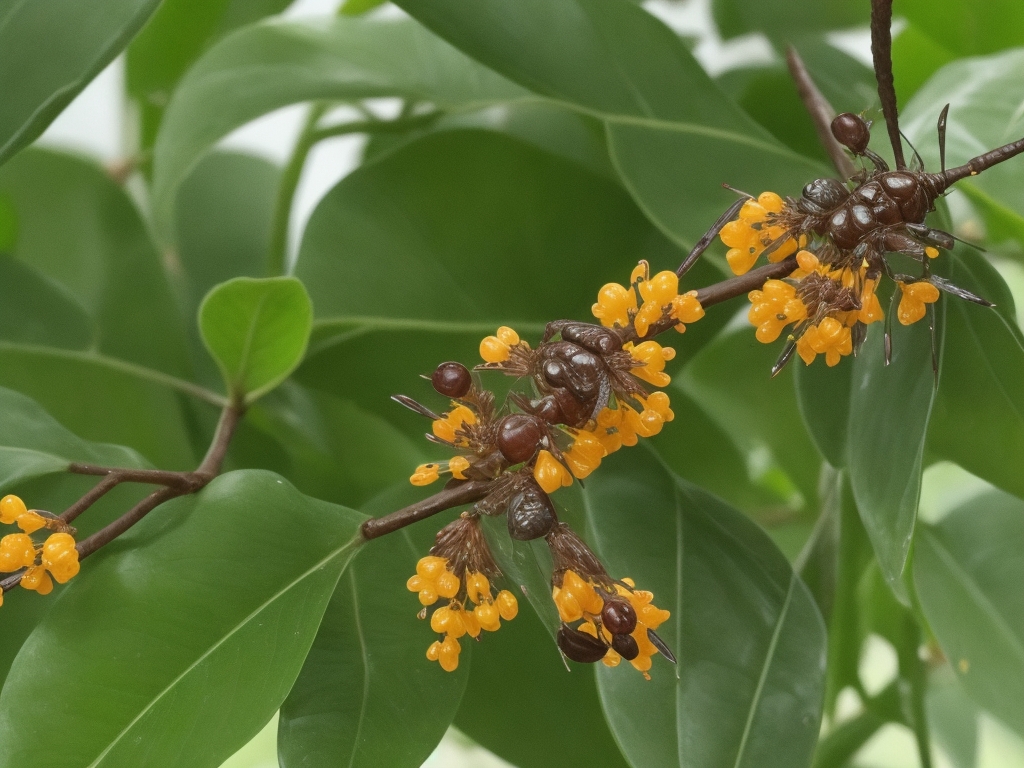“Dabai”, also known as Canarium odontophyllum, is an indigenous plant native to the Southeast Asian countries of Malaysia and Indonesia. This astringent fruit, a proud member of the Burseraceae family, is primarily cultivated and enjoyed in its native region. Despite its relative obscurity on the global stage, dabai is a highly nutritious fruit that offers an array of health dabai benefits. It is a seasonal Borneo fruit that typically ripens and is available from November to February.
Known locally as the black olive or black olive fruit, dabai is one of the hidden treasures of the dense, lush tropical rainforests of Borneo Island. This fruit has played a significant role in the local dabai culture and cuisine for centuries. The indigenous communities of Borneo, including those in Sarawak, Sabah, and Brunei, have long appreciated and utilized this olive-like fruit for its unique taste and purported medicinal properties.

The people of Borneo (Dabai)
The people of Borneo have a deep connection with the land and its abundant produce. For them, the forests of Borneo are not just a rich source of timber; they’re also a veritable pantry of edible fruits and plants. Dabai is one such forest product that is not only consumed locally but also traded in the markets of Sarawak, Sabah, and Brunei.
Dabai is a testament to Borneo’s rich biodiversity. The island is known for its unique flora and fauna, many of which, like dabai, are found nowhere else in the world. The cultivation and consumption of this fruit are part of Borneo’s cultural heritage, with knowledge and practices passed down through generations.
Dabai Tree
The dabai tree is a resilient and hardy species that can reach a height of 30 to 40 meters. It thrives in the humid tropical climate of Borneo, where it is often found along riverbanks and in lowland forests. Each tree bears hundreds of fruits, providing a plentiful supply during the fruiting season.
However, dabai is more than just a local delicacy. It’s also a symbol of Borneo’s unique ecosystem and cultural heritage. The fruit’s cultivation and harvest are tied to traditional practices that respect and sustain the island’s biodiversity. By consuming and trading dabai, the people of Borneo also contribute to the conservation of their island’s unique flora.
To the untrained eye, a dabai fruit looks like a large, black olive. But to the people of Borneo, each fruit carries a taste of home. The fruit’s flesh is soft and buttery, with a taste that’s been described as a mix of avocado and olive, with a hint of chocolate. This unique flavor profile makes dabai a versatile ingredient in many local dishes, from traditional soups and stews to contemporary fusion cuisine.
The cultivation and consumption of dabai are not just about taste and tradition. They’re also about health and nutrition. This avocado-like fruit is a powerhouse of nutrients, packed with vitamins and minerals that contribute to a healthy diet. It’s also believed to have medicinal properties, used in traditional remedies for a variety of ailments.

Dabai’s Appearance and Taste
If you’ve ever seen a dabai fruit, you’ll know that it’s hard to forget. This striking fruit is characterized by its glossy black skin and oval shape, reminiscent of an olive, hence the name black olive fruit. However, unlike olives, which are typically small and round, dabai fruits are much larger and longer, measuring up to 5 cm in length.
When ripe, the fruit’s skin transforms from a bright green to a deep, shiny black, indicating it’s ready to be harvested and savored. Inside, you’ll find a soft, creamy flesh that surrounds a large, hard seed. The flesh, or mesocarp, is where the magic lies. It’s here that the dabai flavor comes to life, offering a unique taste experience that leaves a lasting impression.
The dabai taste is truly one-of-a-kind. It’s often likened to an avocado but with a richer, more complex flavor. The buttery flesh has a slight astringency, balanced by a subtle sweetness. When bitten into, the creamy flesh melts in the mouth, releasing its unique flavor that’s often described as a combination of avocado, olive, and a hint of chocolate. This balance of flavors makes it a versatile fruit that can be used in a variety of culinary applications, from savory dishes to desserts.
However, dabai fruits aren’t typically consumed fresh. They’re usually soaked in warm water first to soften the flesh and reduce their astringency, a unique preparation method that we’ll explore in more detail in the next section.
Traditional Preparation and Uses
Dabai is not just a fruit; it’s a culinary experience. To unlock its unique taste and texture, it’s typically prepared in a specific way. For the uninitiated, figuring out how to prepare dabai can be a unique culinary adventure.
Traditionally, this fruits are soaked in warm water for about 30 minutes before eating. This process softens the flesh and makes it easier to consume. The soaking also helps to reduce the fruit’s natural astringency, enhancing its unique, rich flavors.
Once the fruits are soft and plump, they’re ready to be enjoyed. How to eat dabai typically involves slicing the fruit open, discarding the hard seed, and scooping out the creamy flesh. The taste can be adjusted according to personal preference. Some people enjoy it plain, savoring the fruit’s natural flavors, while others prefer to add a bit of seasoning.
In Sarawak, one common way to enjoy dabai is to season it with a mixture of soy sauce and sugar. The salty-sweet sauce complements the fruit’s rich, creamy flesh, creating a taste sensation that’s hard to resist. This simple, traditional dish is a favorite during the dabai season and is often served as a side dish or appetizer.
But the culinary applications of dabai don’t end there. This versatile fruit can be used in a variety of dishes, from stir-fries and soups to desserts. It’s also a popular ingredient in dabai recipes for traditional cakes and pastries, where its rich, creamy flesh adds moisture and flavor.
In addition to its culinary uses, it has long been recognized for its medicinal properties. Traditional healers in Borneo have used it to treat various ailments, from common colds to digestive issues. The fruit’s high nutritional value also makes it a healthy addition to any diet.
Health Benefits of Dabai
Borneo’s indigenous communities have long known about the health benefits of dabai. Today, scientific research is beginning to catch up, uncovering the fruit’s nutritional profile and potential health benefits.
Dabai is rich in essential nutrients, including vitamins and minerals that contribute to overall health and well-being. Its high vitamin E and carotenoid content are beneficial for eye health, helping to protect the eyes against damage from free radicals. Dabai’s high calcium content also contributes to bone health, supporting bone density and strength.
In addition to its nutritional benefits, dabai is believed to possess medicinal properties. It’s been used in traditional Bornean medicine to treat a range of ailments, from fever and coughs to digestive issues. These traditional uses have sparked interest in the scientific community, leading to ongoing research into the fruit’s potential health benefits.
One area of interest is dabai’s potential antioxidant properties. Antioxidants are compounds that help protect the body against damage from harmful molecules called free radicals. Some studies suggest that dabai may be a good source of natural antioxidants, which could offer potential health benefits, such as reducing the risk of chronic diseases.
While more research is needed to fully understand the health benefits of dabai, its high nutritional value and traditional medicinal uses make it a promising area for future study. In the meantime, there’s no doubt that this nutritious fruit is a healthy and delicious addition to any diet.
Promoting Dabai Worldwide
Despite its many benefits and unique flavor, it remains relatively unknown outside of Borneo. But efforts are being made to change this. Researchers, farmers, and food entrepreneurs are working to promote it, both domestically and internationally.
In recent years, there has been increasing interest in ‘superfoods’ – nutrient-rich foods that offer health benefits. Dabai, with its high nutritional value and potential health benefits, fits this description perfectly. By promoting it as a superfood, proponents hope to increase its recognition and consumption worldwide.

One of the challenges in promoting dabai is its limited availability. The fruit is highly perishable and doesn’t travel well, making it difficult to export. However, researchers are looking into ways to extend its shelf life, such as developing processed products like dabai oil and dried dabai.
While these efforts are still in the early stages, they represent an exciting step forward in sharing this unique Bornean fruit with the world. As more people discover dabai, its popularity is sure to grow. And who knows? Maybe one day, dabai will be as well-known as the avocado or the olive.
In the meantime, if you ever get a chance to try dabai – whether it’s fresh, in a traditional dish, or as part of a modern fusion recipe – don’t miss it. This unique fruit offers a taste of Borneo’s rich biodiversity and culinary heritage, making it a must-try for any food lover.
Conclusion
In the heart of Borneo’s lush rainforest grows a fruit that’s still largely unknown to the world: the dabai. This unique, nutritious, and delicious fruit is more than just a local delicacy. It’s a symbol of the rich biodiversity of Borneo and a testament to its cultural heritage.
It may be native to Borneo, but its potential reaches far beyond the island’s borders. As more research reveals the health benefits of this fruit, and as more people around the world get a chance to taste it, there’s no doubt that it will become more than just an obscure fruit from Borneo. It has all the potential to become a globally recognized superfood.
Whether you’re a food enthusiast, a health-conscious individual, or someone who appreciates the diversity of world cultures, dabai is a fruit worth exploring. So, if you ever get a chance to try it, don’t miss it. You’re not just tasting a fruit; you’re tasting a piece of Borneo’s rich biodiversity and culinary heritage.
Frequently Asked Questions about Dabai
1. What does dabai taste like?
Dabai has a unique, rich flavor. Its creamy flesh is often likened to an avocado but carries hints of olive and chocolate.
2. How do you eat dabai?
Dabai fruits are usually soaked in warm water to soften the flesh and reduce their astringency. Once softened, the flesh can be scooped out and enjoyed as is or seasoned with soy sauce and sugar for a traditional Sarawakian dish.
3. What are the health benefits of dabai?
Dabai is packed with essential nutrients, including high levels of Vitamin E, carotenoids, and calcium. It is also believed to possess anti-inflammatory and antioxidant properties.
4. Where can I buy dabai?
Dabai is primarily found in Borneo, particularly in the Malaysian states of Sarawak and Sabah, and in Brunei. Efforts are being made to introduce this fruit to other parts of the world.
5. Can I use dabai in cooking?
Absolutely! Dabai’s unique flavor and creamy texture make it a versatile ingredient in a variety of dishes, from traditional soups and stews to contemporary fusion cuisine.

Hi, I’m King Phils, a Dragon Fruit enthusiast and blogger. Welcome to my website, where I share everything I know and love about this amazing fruit.